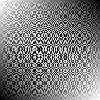
In 1978 I followed a course about the foundations of Quantum Physics. The main theme were the different views on the right interpretation of quantum physics of Einstein on the one hand and Bohr on the other.
In 1935, Einstein, together with Podolsky and Rosen, described a thought experiment that showed that quantum physics must be incomplete. Whereas quantum physics gives probabilities for the outcomes of measurements, EPR showed that there is more under the sun than can be measured. The EPR experiment showed that it is possible to obtain certain knowledge of something “out there” that cannot be corroborated by measurements and that therefore is not predicted by quantum physics. Einstein, Podolsky and Rosen concluded that there must exist a theory that gives a more detailed description of reality than quantum physics. Bohr was not at all convinced by Einsteins argumentation and he published a paper to disprove EPR. Einstein, on the other hand, never became convinced by Bohr.
In 1964, J.S. Bell presented a proof that any such more realistic theory, if it exists, must be non-local, meaning that in such a theory an event can have an immediate influence on another event, not bound by the velocity of light.
When in 1978 I learned about Bell’s proof, I felt that something was wrong. I had been primed by studying another subject in the preceding months: the problem of measuring distances at a cosmic scale. I had learned that one cannot take for given frames of reference in curved space-time. You need operational definitions for distances between points in space time. And you need to make more distance measurements than you might think, because the structure of space time can to some degree be unknown.
In short, my Bell theorem “loophole” is that settings of far apart measuring instruments cannot be represented by independent coordinates. The very presence of the (spinning) particles makes for an anholonomic metric.
Once gotten rid of a global pre-existing frame of reference, all hopes of “disproving Einstein” dissolve and all concentration has to go to building up a reference frame from the ground, or rather from innumerous spin correlation measurements with random settings of the measuring apparatuses. This reference frame has only statistical meaning and cannot be used as backdrop for the spin measurements themselves, in the same way that temperature doesn’t say very much about the movement of a single particle.
As a counterexample of a local hidden variable theory that reproduces QM I have developed a very primitive model of a spin ℏ/2 particle as a space time metric structure.
It is this model of a particle with spin that spurred my interest in Symbolic Computing and that made me write Bracmat.
I am still following developments related to the issue raised by Einstein, mostly by a quick daily check of http://arxiv.org/archive/quant-ph.
You can read my page that is dedicated to the EPR-experiment and Bell’s proof, A Cosmic EPR experiment, which starts with a fictive experiment at a truly galactic scale. This page is always under construction!
Links on arXiv.org:
- Space-Time Structure as Hidden Variable. You can also download this paper in a two-column format that includes the hi-res figures (stereograms! Don’t cross your eyes, stare: left picture = left eye, right picture = right eye.).
- On Bell’s Paradox